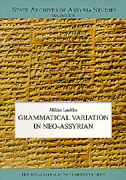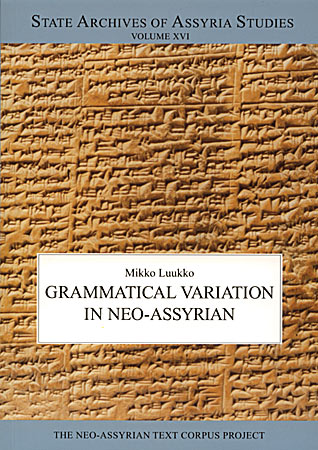Grammatical Variation in Neo-Assyrian
Mikko Luukko
Variation is a prerequisite of change ...without synchronic variation, change would not have a launching pad.” Thus says Raimo Anttila in his Historical and Comparative Linguistics. The problem with ancient languages is that it is difficult to get enough texts to be able to document variation. In this respect, the Neo-Assyrian period stands apart from most of the other eras of the Ancient Near East. The century after the coming to power of the Sargonid kings in 722 BCE is documented by thousands of preserved letters between bureaucrats of the royal administration written in the Neo-Assyrian dialect/language. The value of this letter corpus for being able to document synchronic variation in Neo-Assyrian is difficult to overstate. And this is in addition to the wide range of other types of texts available from this period.
- Description
- Table of Contents
- Subjects
On the basis of this extensive corpus, it is possible to define variation in great detail across the grammatical spectrum: in graphotactics, in phonology, in morphology, in syntax, and in semantics. Thousands of detailed examples make the extent of synchronic variation in Neo-Assyrian explicit in a way that would not be possible without such wide-ranging documentation. Two detailed appendices on the letter corpus itself and on the senders of the letters would make useful handbooks on their own. And the discussed terms and the cited passages are fully indexed.
Acknowledgements
Abbreviations and Symbols
1. Introduction
2. Evidence
3. Graphemic Variation and Orthographic Peculiarities
4. Phonological Variation
5. Morphological Variation
6. Syntactic Variation
7. Semantic Variation
8. Conclusions
Appendix A: Neo-Assyrian Corpus
Appendix B: Writers of Neo-Assyrian Letters
Bibliography
Indices
Mailing List
Subscribe to our mailing list and be notified about new titles, journals and catalogs.




